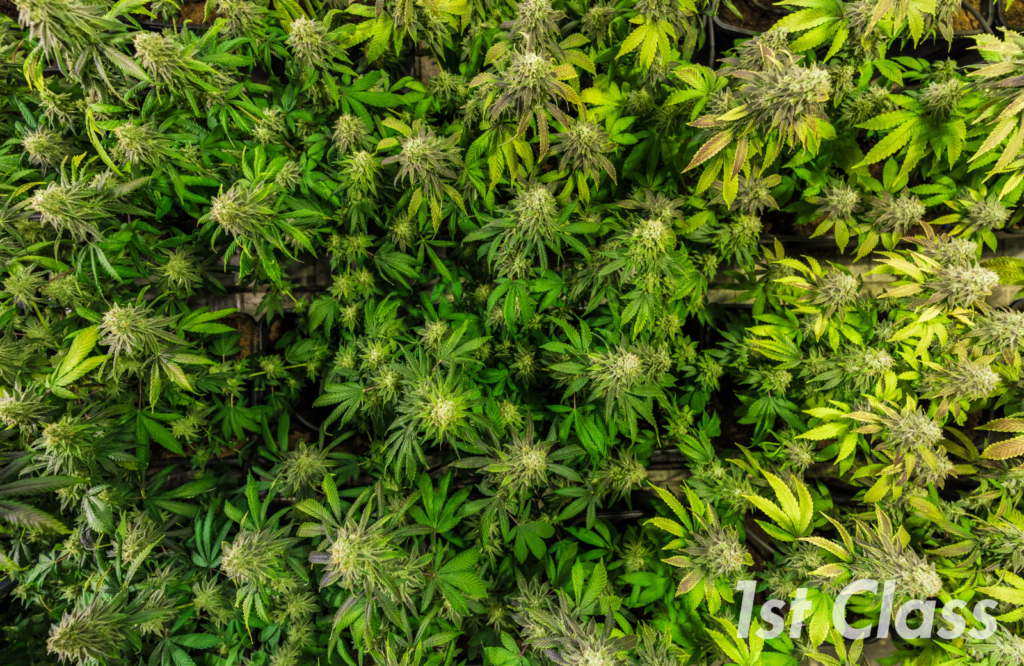Cannabis Sativa, also known as marijuana, hemp, or simply cannabis, is a plant that has been cultivated and used by humans for thousands of years. This versatile plant is renowned for its various applications, ranging from medicinal and recreational use to industrial and environmental purposes. In this article, we will explore the fascinating world of Cannabis Sativa, delving into its botany, historical significance, chemical composition, uses, and potential benefits, supported by references to reputable studies and sources.
Botany and Species:
Cannabis Sativa is a member of the Cannabaceae family and is one of the three main species of the Cannabis genus. The other two species are Cannabis Indica and Cannabis Ruderalis. Each species has distinct characteristics, which have been honed through centuries of selective breeding and adaptation.
- Cannabis Sativa: This species is known for its tall and slender stature, with narrow leaves and long internodes. Sativa plants can reach impressive heights, often exceeding 12 feet. The longer flowering cycles of Cannabis Sativa make it a popular choice for outdoor cultivation in temperate climates.
- Cannabis Indica: Indica plants are generally shorter and bushier, with wider leaves and shorter internodes compared to Sativa. They are well-suited for indoor cultivation due to their compact size and faster flowering times.
- Cannabis Ruderalis: Ruderalis is the least commonly known species and is often considered a subspecies of Sativa. It is characterized by its short stature, small leaves, and ruderal trait, meaning it transitions to the flowering stage based on age rather than light cycles.

Historical Significance:
Cannabis Sativa has a long and storied history, deeply entwined with human civilization and culture. Historical records indicate that the plant has been utilized for various purposes dating back thousands of years.
Ancient China: The use of Cannabis Sativa in China can be traced back to around 4000 BCE. It was used for medicinal purposes and the production of textiles and paper.
Ancient India: In ancient India, Cannabis Sativa held spiritual significance and was considered a sacred plant. It played a role in religious rituals and was used in traditional Ayurvedic medicine for various therapeutic purposes.
Ancient Middle East: Cannabis has been mentioned in ancient texts and scripts from the Middle East, indicating its use in various cultural and medicinal practices.
Chemical Composition and Cannabinoids:
Cannabis Sativa contains a diverse array of chemical compounds, with the most notable ones being cannabinoids. These cannabinoids interact with the body’s endocannabinoid system, influencing various physiological processes.
- Delta-9-Tetrahydrocannabinol (THC): THC is the primary psychoactive compound in Cannabis Sativa. It is responsible for the euphoric “high” experienced by recreational users. THC binds to cannabinoid receptors in the brain and alters perception, mood, and cognition.
- Cannabidiol (CBD): CBD is another prominent cannabinoid found in Cannabis Sativa. Unlike THC, CBD is non-psychoactive and does not produce intoxication. It has gained attention for its potential therapeutic properties, including anti-inflammatory, analgesic, and anxiolytic effects.
- Other Cannabinoids: In addition to THC and CBD, Cannabis Sativa contains numerous other cannabinoids, such as cannabigerol (CBG), cannabinol (CBN), cannabichromene (CBC), and more. Each cannabinoid may have distinct effects and potential medical applications.
Medicinal Applications and Potential Benefits:
Cannabis Sativa has a long history of medicinal use, with potential applications in various health conditions. The plant’s therapeutic properties are primarily attributed to its cannabinoids and their interactions with the endocannabinoid system.
- Pain Management: Both THC and CBD have demonstrated analgesic properties and may be beneficial in managing chronic pain conditions, such as neuropathic pain and arthritis.
- Epilepsy: CBD has shown promise in reducing the frequency and severity of seizures in certain forms of epilepsy, leading to the approval of Epidiolex, a CBD-based medication, by the U.S. Food and Drug Administration (FDA).
- Anxiety and Depression: CBD has been investigated for its potential anxiolytic and antidepressant effects, although further research is needed to fully understand its efficacy in treating these conditions.
- Neurological Disorders: Preliminary research suggests that cannabinoids may have neuroprotective properties and could potentially benefit individuals with neurodegenerative disorders like Alzheimer’s disease and Parkinson’s disease.
Industrial Applications:
Cannabis Sativa has a wide range of industrial applications, particularly hemp varieties that are low in THC and primarily grown for their fibers and seeds.
- Textiles: Hemp fibers have been used for centuries to produce textiles, ropes, and durable fabrics.
- Paper: Hemp was historically used to make paper, and it is considered a more sustainable alternative to conventional wood-based paper production.
- Construction Materials: Hempcrete, a mixture of hemp hurds and lime, is used in construction as an eco-friendly and insulating material.
- Food and Nutrition: Hemp seeds are rich in essential fatty acids, protein, and various nutrients, making them a valuable addition to a balanced diet.

Recreational Use and Effects:
Cannabis Sativa is widely used recreationally for its psychoactive effects. The high THC content in some Sativa strains contributes to the euphoria and altered sensory experiences experienced by recreational users.
The effects of Cannabis Sativa can vary depending on the strain, individual tolerance, and method of consumption. Common effects include euphoria, relaxation, heightened senses, increased appetite, and altered perception of time.
Legal Status and Regulation:
The legal status of Cannabis Sativa varies significantly around the world. Some countries have legalized cannabis for medicinal and/or recreational use, while others maintain strict prohibitions on its cultivation, possession, sale, or consumption.
In some regions, there is a growing recognition of the potential medical benefits of Cannabis Sativa, leading to its legalization for medical purposes in certain jurisdictions.
Potential Risks and Side Effects:
While Cannabis Sativa has potential benefits, it is not without risks, particularly when used recreationally and excessively. Some potential risks and side effects include:
- Impaired Cognitive Function: Cannabis use can impair memory, attention, and decision-making, especially when used in large amounts or over an extended period.
- Addiction and Dependence: Long-term and heavy use of cannabis, particularly high-THC strains, can lead to the development of dependence and addiction.
- Psychiatric Effects: In some individuals, cannabis use may exacerbate or trigger psychiatric conditions, such as anxiety, paranoia, and psychosis.
- Respiratory Issues: Smoking cannabis can lead to respiratory problems similar to smoking tobacco.
Conclusion:
Cannabis Sativa is a plant with a rich history and diverse potential applications. From its historical significance in ancient civilizations to its modern uses in medicine, industry, and recreation, Cannabis Sativa continues to intrigue researchers, policymakers, and the general public. As our understanding of this versatile plant grows, its potential benefits and risks will shape the future of its use and regulation.




